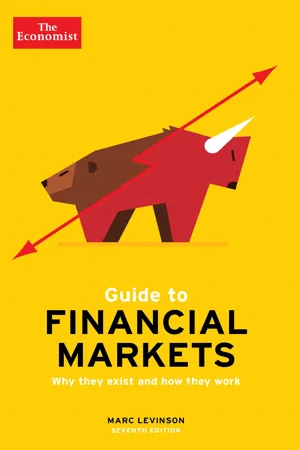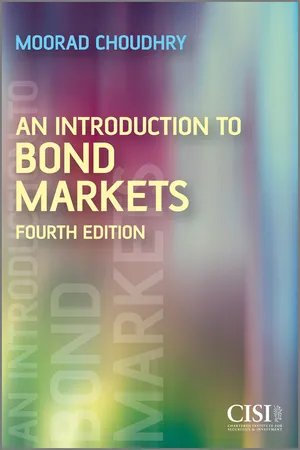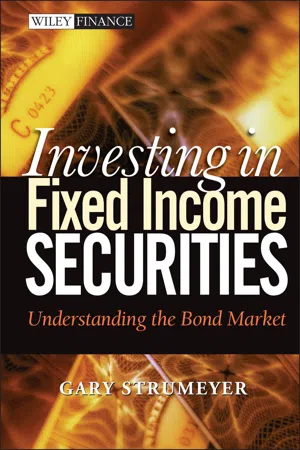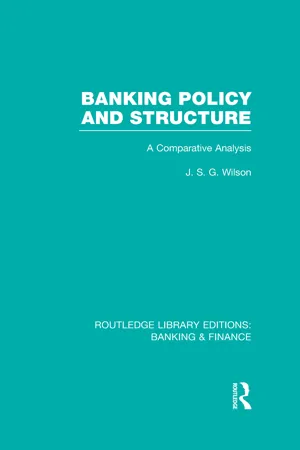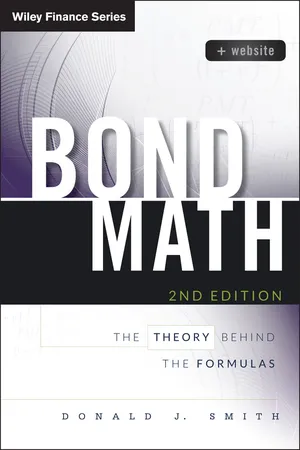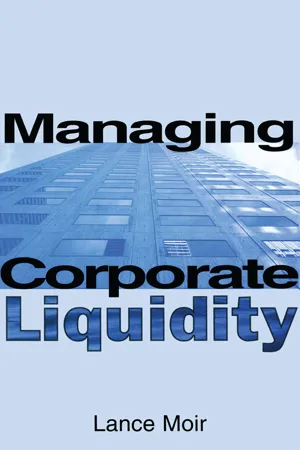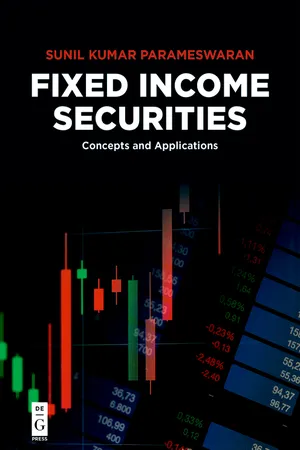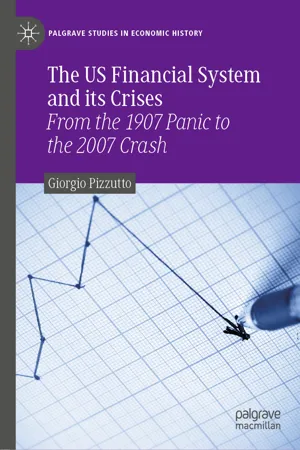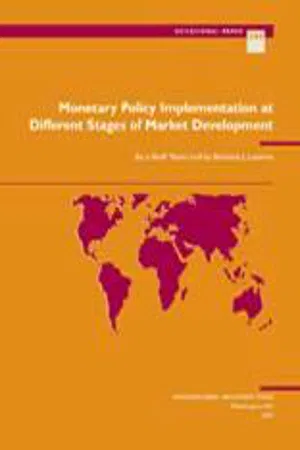Economics
Money Market Instruments
Money market instruments are short-term, highly liquid financial assets that are used for borrowing and lending in the short term. These instruments include Treasury bills, commercial paper, certificates of deposit, and repurchase agreements. They are typically considered low-risk investments and are used by governments, corporations, and financial institutions to manage their short-term funding needs.
Written by Perlego with AI-assistance
Related key terms
11 Key excerpts on "Money Market Instruments"
- eBook - ePub
The Economist Guide To Financial Markets 7th Edition
Why they exist and how they work
- Marc Levinson(Author)
- 2018(Publication Date)
- Economist Books(Publisher)
Money-market funds are by no means the only investors in money-market instruments. All sizeable banks maintain trading departments that actively speculate in short-term securities. Investment trusts (mutual funds) that mainly hold bonds or equities normally keep a small proportion of their assets in money-market instruments to provide flexibility, in part to meet investors’ requests to redeem shares in the trust without having to dispose of long-term holdings. Pension funds and insurers, which typically invest with long time horizons, also invest a proportion of their assets in money-market instruments in order to have access to cash at any time without liquidating long-term positions. Businesses in the United States owned $630 billion of money-market instruments, including commercial paper and shares in money-market funds, at the end of 2017. Certain types of money-market instruments, particularly bank certificates of deposit, are often owned directly by individual investors.Interest rates and prices
Borrowers in the money markets pay interest for the use of the money they have borrowed. Most money-market securities pay interest at a fixed rate, which is determined by market conditions at the time they are issued. Some issuers prefer to offer adjustable-rate instruments, on which the rate will change from time to time according to procedures laid down at the time the instruments are sold. Because of their short maturities, most money-market instruments do not pay periodic interest during their lifetimes but rather are sold to investors at a discount to their face value. The investor can redeem them at face value when they mature, with the profit on the redemption serving in place of interest payments.The value of money-market securities changes inversely to changes in short-term interest rates. Because money-market instruments by nature are short term, their prices are much less volatile than the prices of longer-term instruments, and any loss or gain from holding the security in the short time until maturity rather than investing at current yields is small.Types of instruments
There are numerous types of money-market instruments. The best known are commercial paper, bankers’ acceptances, treasury bills, government agency notes, local government notes, interbank loans, time deposits and paper issued by international organisations. The amount issued during the course of a year is much greater than the amount outstanding at any one time, as many money-market securities are outstanding for only short periods of time. - eBook - ePub
- Moorad Choudhry(Author)
- 2010(Publication Date)
- Wiley(Publisher)
Money markets exist in every market economy, which is practically every country in the world. They are often the first element of a developing capital market. In every case they are comprised of securities with maturities of up to 12 months. Money market debt is an important part of the global capital markets, and facilitates the smooth running of the banking industry as well as providing working capital for industrial and commercial corporate institutions. The market provides users with a wide range of opportunities and funding possibilities, and the market is characterised by the diverse range of products that can be traded within it. Money Market Instruments allow issuers, including financial organisations and corporates, to raise funds for short-term periods at relatively low interest rates. These issuers include sovereign governments, who issue Treasury bills, corporates issuing commercial paper and banks issuing bills and certificates of deposit. At the same time, investors are attracted to the market because the instruments are highly liquid and carry relatively low credit risk. The Treasury bill market in any country is that country’s lowest-risk instrument, and consequently carries the lowest yield of any debt instrument. Indeed, the first market that develops in any country is usually the Treasury bill market. Investors in the money market include banks, local authorities, corporations, money market investment funds and mutual funds, and individuals.In addition to cash instruments, the money markets also consist of a wide range of exchange-traded and over-the-counter off-balance sheet derivative instruments. These instruments are used mainly to establish future borrowing and lending rates, and to hedge or change existing interest-rate exposure. This activity is carried out by both banks, central banks and corporates. The main derivatives are short-term interest-rate futures, forward-rate agreements and short-dated interest-rate swaps, such as overnight index swaps.In this chapter we review the cash instruments traded in the money market. In further chapters we review banking asset and liability management, and the market in repurchase agreements. Finally, we consider the market in money market derivative instruments including interest-rate futures and forward-rate agreements.INTRODUCTION
The cash instruments traded in money markets include the following:• time deposits; • Treasury bills; • certificates of deposit; • commercial paper; • banker’s acceptances; • bills of exchange; • repo and stock lending.Treasury bills are used by sovereign governments to raise short-term funds, while certificates of deposit (CD - eBook - ePub
An Introduction to Banking
Liquidity Risk and Asset-Liability Management
- Moorad Choudhry(Author)
- 2011(Publication Date)
- Wiley(Publisher)
Money markets exist in every market economy, which is practically every country in the world. They are often the first element of a developing capital market. In every case they are comprised of securities with maturities of up to 12 months. Money market debt is an important part of global capital markets, and facilitates the smooth running of the banking industry as well as providing working capital for industrial and commercial corporate institutions. The market provides users with a wide range of opportunities and funding possibilities, and the market is characterized by the diverse range of products that can be traded within it. Money Market Instruments allow issuers, including financial organizations and corporates, to raise funds for short-term periods at relatively low interest rates. These issuers include sovereign governments, who issue Treasury bills, corporates issuing commercial paper and banks issuing bills and certificates of deposit. At the same time, investors are attracted to the market because the instruments are highly liquid and carry relatively low credit risk. The Treasury bill market in any country is that country’s lowest risk instrument, and consequently carries the lowest yield of any debt instrument. Indeed, the first market that develops in any country is usually the Treasury bill market. Investors in the money market include banks, local authorities, corporations, money market investment funds and mutual funds, and individuals.In addition to cash instruments, the money markets also consist of a wide range of exchange-traded and over-the-counter off-balance-sheet derivative instruments. These instruments are used mainly to establish future borrowing and lending rates, and to hedge or change existing interest rate exposure. This activity is carried out by both banks, central banks and corporates. The main derivatives are short-term interest rate futures, forward rate agreements and short-dated interest rate swaps, such as overnight index swaps.In this chapter we review the cash instruments traded in the money market. In further chapters we review banking asset and liability management, and the market in repurchase agreements. Finally, we consider the market in money market derivative instruments including interest rate futures and forward rate agreements.INTRODUCTION The cash instruments traded in money markets include the following:- time deposits;
- Treasury bills;
- certificates of deposit;
- commercial paper;
- banker’s acceptances;
- bills of exchange;
- repo and stock lending.
Treasury bills are used by sovereign governments to raise short-term funds, while certificates of deposit (CDs) are used by banks to raise finance. The other instruments are used by corporates and occasionally banks. Each instrument represents an obligation on the borrower to repay the amount borrowed on the maturity date together with interest if this applies. The instruments above fall into one of two main classes of money market securities: those quoted on a yield basis and those quoted on a discount basis. These two terms are discussed below. A repurchase agreement - eBook - ePub
Investing in Fixed Income Securities
Understanding the Bond Market
- Gary Strumeyer(Author)
- 2012(Publication Date)
- Wiley(Publisher)
Chapter 8
Money Market Instruments
An individual investor seeking to maximize the return on his short-term fixed income assets, or a cash manager looking to get the biggest bang for her buck on the firm’s liquid assets, must understand the money market (MM) with its unique characteristics and distinctive formulaic calculations. First, you should learn about the myriad MM products available, as well as the players in this unique market. You must understand the products’ characteristics and risk/reward trade-offs. Then, you need to determine the time horizon or duration of the assets purchased. Finally, you must compare the yields on these different products to assess whether you are being rewarded for any additional risks (credit and market) undertaken.The money market involves the borrowing and lending of money for periods of a year and less. Massive sums of capital can be transferred rapidly and efficiently from one economic unit (corporations, municipalities, banks, etc.) to another for relatively short periods of time. Institutions with short-term borrowing needs can meet these needs by maintaining access to the money market and raising funds when required. In the same way, holders of excess cash can maximize their returns by investing in money market securities.Money market securities are thus debt instruments characterized by short-term maturities ranging from overnight to one year. Money market securities are typically liquid, and possess relatively high credit quality and low interest rate risk. Trades in money markets are generally quite large (trades in the billions of dollars are common). Active secondary markets allow most MM securities to be sold prior to maturity if a need for cash emerges.These instruments are influenced by Federal Reserve policy and activity more than any other sector of the fixed income market. Utilizing the money market allows investors to enhance returns on cash reserves, while at the same time maintaining liquidity and preserving capital through high-quality investments. Investors managing large cash balances through the utilization of money market mutual funds can in effect cut out the middleman and purchase short-term securities directly in the money market. - eBook - ePub
Banking Policy and Structure (RLE Banking & Finance)
A Comparative Analysis
- J Wilson(Author)
- 2012(Publication Date)
- Routledge(Publisher)
3 it has been possible to encourage private enterprise itself to supply the desired facilities, while at other times (e.g., in Australia) it was private enterprise that forced the pace and the authorities were ultimately obliged to recognise the existence of a market and to provide it with the lender-of-last-resort facilities without which such a market cannot approach its full potential.Defined in a narrow sense, the term ‘money market’ can be applied to that group of related markets which deals in assets of relative liquidity – such as call money, federal funds, Treasury bills or notes, bills of exchange (or other ‘commercial paper’), and short-dated government bonds. In some centres, the term has been applied very narrowly indeed, as used to be the case in London where the money market was regarded as deriving primarily from the market relationships between the discount houses and the commercial banks. Nevertheless, such an emphasis where it occurs must not blind us to the fact that the term is not infrequently also applied in a wider and looser context. In its broader connotations, the term encompasses the whole complex of financial institutions, which in varying degrees act together to satisfy the monetary needs of a community and, sometimes, such institutions are scattered spatially over a wide area.Whatever type of definition one attempts, money-market structure shows a wide diversity of form and it would serve no useful purpose to impose a classification by categories. In this field, probably more than in any other, it is extremely difficult to find any precise lines of division between one ‘type’ and another. Over recent years, it is true, economists have increasingly attempted to draw a distinction between ‘developed'and ‘undeveloped’ money markets, but the forms of organisation are so various that the line of demarcation becomes decidedly blurred. It is surely all a matter of degree. Yet some ‘standard of reference’ there must be. - eBook - ePub
Bond Math
The Theory Behind the Formulas
- Donald J. Smith(Author)
- 2014(Publication Date)
- Bloomberg Press(Publisher)
CHAPTER 1 Money Market Interest RatesAn interest rate is a summary statistic about the cash flows on a debt security such as a loan or a bond. As a statistic, it is a number that we calculate. An objective of this chapter is to demonstrate that there are many ways to do this calculation. Like many statistics, an interest rate can be deceiving and misleading. Nevertheless, we need interest rates to make financial decisions about borrowing and lending money and about buying and selling securities. To avoid being deceived or misled, we need to understand how interest rates are calculated.It is useful to divide the world of debt securities into short-term money markets and long-term bond markets. The former is the home of Money Market Instruments such as Treasury bills, commercial paper, bankers acceptances, bank certificates of deposit, and overnight and term sale-repurchase agreements (called “repos”). The latter is where we find coupon-bearing notes and bonds that are issued by the Treasury, corporations, federal agencies, and municipalities. The key reference interest rate in the U.S. money market is 3-month LIBOR (the London Interbank offer rate); the benchmark bond yield is on 10-year Treasuries.This chapter is on money market interest rates. Although the money market usually is defined as securities maturing in one year or less, much of the activity is in short-term instruments, from overnight out to six months. The typical motivation for both issuers and investors is cash management arising from the mismatch in the timing of revenues and expenses. Therefore, primary investor concerns are liquidity and safety. The instruments themselves are straightforward and entail just two cash flows, the purchase price and a known redemption amount at maturity.Let’s start with a practical money market investment problem. A fund manager has about $1 million to invest and needs to choose between two 6-month securities: (1) commercial paper (CP) quoted at 3.80% and (2) a bank certificate of deposit (CD) quoted at 3.90%. Assuming that the credit risks are the same and any differences in liquidity and taxation are immaterial, which investment offers the better rate of return, the CP at 3.80% or the CD at 3.90%? To the uninitiated, this must seem like a trick question—surely, 3.90% is higher than 3.80%. If we are correct in our assessment that the risks are the same, the CD appears to pick up an extra 10 basis points. The initiated know that first it is time for a bit of bond math. - eBook - ePub
- Lance Moir(Author)
- 2014(Publication Date)
- Routledge(Publisher)
6Liquidity and the use of deposit and borrowing instruments● A brief description of various short term deposit and borrowing instruments● How to decide which instrument is appropriate for a given circumstanceThe management of liquidity will give rise to cash surpluses or requirements and these will need to be invested or borrowed through the use of money-market instruments. The choice of a particular instrument will affect the availability of liquidity. For example, investing in an instrument which cannot be sold in the market and is only available on maturity (say, a 1-year fixed deposit) means that that amount of liquidity is not available. Similarly, in borrowing facilities, the availability of a committed line of credit (as opposed to an uncommitted line or an overdraft) means that liquidity is available, even if the line of credit is not drawn. This chapter considers the general characteristics of instruments so that a decision can be taken on whether an instrument is likely to suit a particular requirement. Individual features are described; however, care should be taken to understand how these operate in any particular market and how they have evolved.Given the concentration on liquidity, the instruments considered are generally short term (i.e. with maturities of less than 1 year) but, as will be seen, borrowing facilities with maturities of greater than 1 year are frequently part of planning for future liquidity.Deposit instrumentsThe need to deposit will have been identified from a cash flow forecast. This will also have identified the amount available and the period for which the funds are forecast to be available, and clearly these requirements will colour the selection of instrument. The cash forecast will also allow a judgement on the risk that the cash may be required sooner than planned (for example, there is a 50% possibility that cash may be needed sooner). The main objectives of short term investment described in Chapter 1 - eBook - ePub
- (Author)
- 2023(Publication Date)
- Wiley(Publisher)
Money Market Instruments are debt securities with original maturities of one year or less. There are many types, including overnight sale and repurchase agreements (repos), bank certificates of deposit, commercial paper, Treasury bills (government securities issued with a maturity of one year or less), bankers’ acceptances, and time deposits based on market reference rates. There are mutual funds that invest solely in eligible money market securities, known as money market mutual funds, which are sometimes considered as an alternative to bank deposits.There are several important differences in yield measures quoted for money market instruments versus bonds:-
Bond yields-to-maturity are annualized and compounded. Yield measures in the money market are annualized but not compounded; the return on a money market instrument is stated on a simple interest basis.
-
Bond yields-to-maturity usually are stated for a common periodicity for all times-to-maturity. Money Market Instruments with different times-to-maturity have different periodicities for the annual rate.
-
Bond yields-to-maturity can be calculated using standard time-value-of-money analysis. Money Market Instruments are often quoted using non-standard interest rates and require different pricing equations than those used for bonds.
In general, quoted money market rates are either discount rates or add-on rates . Although market conventions vary around the world, commercial paper, Treasury bills, and bankers’ acceptances often are quoted on a discount rate basis. Bank certificates of deposit, repos, and market reference rate indexes are quoted on an add-on rate basis. While discount rate - eBook - ePub
Fixed Income Securities
Concepts and Applications
- Sunil Kumar Parameswaran(Author)
- 2019(Publication Date)
- De Gruyter(Publisher)
Treasury bills, which are one of the most important constituents of the money market, were studied in detail. We looked at concepts such as the money market yield, the bond equivalent yield, the holding period return, and the tail. We then demonstrated the use of Excel functions to compute these yield/return measures. Repurchase agreements and reverse repurchase agreements were the next topic of discussion. We looked at repos from the perspective of a securities dealer, as well as a central bank. Negotiable certificates of deposit and term CDs were studied next, followed by commercial paper. The chapter concluded with a look at bills of exchange, trade acceptances, and bankers’ acceptances. In the following chapter, we examine issues pertaining to floating rate bonds. - eBook - ePub
The US Financial System and its Crises
From the 1907 Panic to the 2007 Crash
- Giorgio Pizzutto(Author)
- 2019(Publication Date)
- Palgrave Macmillan(Publisher)
Money market funds have never enjoyed government insurance—except during the 2008 crisis—and must thus choose an investment strategy that will reassure their depositors/financers, whose primary objective is not so much high yield but rather the stability of their capital. The sums they have on deposit must be immediately available without the risk of losing value. Institutional money market funds handle the liquidity of financial intermediaries and financial and non-financial corporations and constitute the most important component of money market funds. Retail funds handle the invested capital of families; the values here are much lower than in money market funds. The funds provide a higher yield than could be obtained with a bank account; they pledge to keep a stable quotation, investing primarily not only in short-term government securities (e.g., US Treasury bills and commercial paper) but also in corporate bonds (prime funds). Prime money market funds invest in short-term assets issued by commercial banks and investment banks. The recently introduced money market fund reform exempted money funds from the requirement of preserving the value of its investments at one dollar a share. The shift to a fluctuating value for the net asset value (NAV—the value of a fund’s assets minus the value of its liabilities) introduced a risk into investments in money market funds. Prior to the 2007–2008 crisis, money market funds preserved a constant value of their shares and were considered virtually as safe as bank deposits while offering a slightly higher yield. A significant portion of the assets in a money market fund portfolio is commercial papers, and thus, these funds increase demand for them - Bernard Laurens(Author)
- 2005(Publication Date)
- INTERNATIONAL MONETARY FUND(Publisher)
12Box 8.9 . Tunisia: Monetary Policy InstrumentsReserve requirements
These are calculated as monthly averages. They must amount to 2 percent of domestic currency-denominated sight and term deposits and similar instruments (i.e., certificates of deposits) with an initial maturity below three months; 1 percent for term deposit and similar instruments with initial maturity between three months and less than two years; and 0 percent for term deposits and similar instruments of two years or more. They are not remunerated, and they are not actively used as a monetary policy instrument.Standing facilities
- One- to seven-day reverse repurchase operations: Bank may request liquidity against delivery of collateral at a premium over the official intervention rate (+ 100 basis points). Accepted collateral includes treasury bills and banks’ claims on priority and other sectors.
- End-of-day (overnight) settlement operations: Banks may request liquidity against delivery of collateral or place liquidity at the official intervention rate plus/minus a spread. Accepted collateral includes treasury bills and banks’ claims on priority and other sectors.
Money market operations
- Weekly seven-day tender for repurchase operations: The BCT invites bids for seven-day repurchase operations. The BCT decides on the amount to be injected, and the bids are allocated using a multiple price auction (as of June 2004). Accepted collateral includes treasury bills and bank claims on corporations that are deemed to be financially sound.
- Deposit auctions: When the banking system as a whole is overly liquid, deposit auctions are used instead of credit auctions to mop up excess liquidity. Bids are ranked and accepted according to the rate that is proposed (interest rate auction); they cannot exceed that of the weekly seven-day tender for repo operations.
Index pages curate the most relevant extracts from our library of academic textbooks. They’ve been created using an in-house natural language model (NLM), each adding context and meaning to key research topics.
